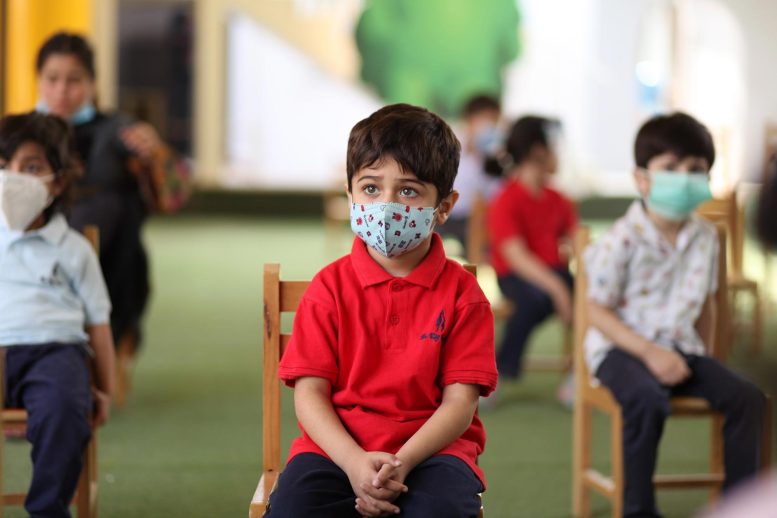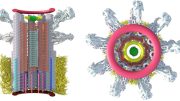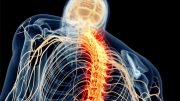
Why are children are much less likely to become seriously ill from SARS-CoV-2? According to new research, it comes down to fundamental differences in the immune response of adults and children.
Research shows that children’s stronger innate immune response helps them fend off SARS-CoV-2 more effectively than adults, who experience slower immune reactions allowing the virus to progress.
Fundamental differences in the immune response of adults and children can help to explain why children are much less likely to become seriously ill from SARS-CoV-2, the virus that causes COVID-19 disease, according to new research from the Wellcome Sanger Institute, University College London, and their collaborators.
The study, published in the journal Nature, is the most comprehensive single-cell study to compare SARS-CoV-2 infection in adults and children across multiple organs. Researchers found that a stronger ‘innate’ immune response in the airways of children, characterized by the rapid deployment of interferons, helped to restrict viral replication early on. In adults, a less rapid immune response meant the virus was better able to invade other parts of the body where the infection was harder to control.
Research Findings and Implications for Treatment
As part of the Human Cell Atlas[1] initiative to map every cell type in the human body, the findings will be a valuable contribution to predict personal risk from SARS-CoV-2. A nasal swab to measure the immune response in newly infected adults could be used to identify those at higher risk who may be candidates for pre-emptive monoclonal antibody treatment. Recent research has also suggested inhalation of interferons could be a viable therapy.[2]
The immune system that we are born with is not the same as the one we have as adults. The ‘innate’ immune system of children is better able to recognize dangerous viruses or bacteria automatically, triggering ‘naïve’ B and T cells that can adapt to the threat. Adults have a more ‘adaptive’ immune system containing a huge repertoire of ‘memory’ B and T cell types, which have been trained through past exposure to respond to a particular threat.[3] Though the adult immune system also has an innate response, it is more active in children.
Understanding Innate and Adaptive Immune Systems
One of the key mechanisms of both immune systems is a group of proteins called interferons, which are released in the presence of viral or bacterial threats and tell nearby cells to tighten their defenses. Interferons are proteins with strong anti-viral activity and their production will typically lead to the activation of B and T cells, which kill infected cells and prevent the pathogen from spreading further.
For this study, researchers at University College London (UCL) and affiliated hospitals[4] collected and processed matched airway and blood samples from 19 pediatric and 18 adult COVID-19 patients with symptoms ranging from asymptomatic to severe, as well as control samples from 41 healthy children and adults.
Detailed Cellular Analysis and Results
Single-cell sequencing of the samples was done at the Wellcome Sanger Institute to generate a dataset of 659,217 individual cells. These cells were then analyzed, revealing 59 different cell types in airways and 34 cell types in blood, including some never previously described.
Analysis showed that interferons were more strongly expressed in healthy children compared to adults, with a more rapid immune response to infection in children’s airways. This would help to restrict viral replication early on and give children an immediate advantage in preventing the virus from infecting the blood and other organs.
Implications for Adult and Pediatric COVID-19 Treatments
“Because SARS-CoV-2 is a new virus, it isn’t something that the adaptive immune system of adults has learned to respond to. The innate immune system of children is more flexible and better able to respond to new threats. What we see at a molecular level are high levels of interferons and a very quick immune response in children that helps to explain why they are less severely affected by COVID-19 than adults.”
— Dr. Masahiro Yoshida, University College London
The study also detailed how the immune system of adults, with its high numbers of ‘killer’ immune cells such as B and T cells, can work against the body once SARS-CoV-2 has spread to other parts of a patient.
“Compared to children, adult blood has a greater number and variety of cytotoxic immune cells, which are designed to kill infected cells to prevent an infection spreading. But it is a fine line between helping and hindering. Once the virus has spread to several areas of the body, organ damage can be caused by the immune system trying and failing to control the infection. Our study shows that not only do children respond better initially, if the virus does enter the blood the cytotoxic response is less forceful.”
— Dr. Marko Nikolic, University College London
Assessing Risk and Personalizing COVID-19 Therapies
Knowing exactly how and why the immune response to SARS-CoV-2 can fail to control the infection or start to harm the body provides scientists with the means to start asking why certain individuals may be at greater risk of serious illness.
These data suggest that newly diagnosed adults could be tested to check interferon levels in the airway. Higher interferon levels, similar to those found in children, would suggest a lower risk of severe disease, whereas low interferon levels would suggest higher risk. Higher risk patients could then be considered for pre-emptive treatments such as monoclonal antibodies, which are expensive and can be in limited supply.
Conclusion: Understanding Immune Response Differences to Inform Treatment
“To put it simply, the innate immune response is better at fighting COVID-19 and children have stronger innate immunity, but immunity is also a complex ballet involving many types of cells. The timing and the types of cells that are triggered will influence how an infection develops, and this will vary between individuals for all sorts of reasons in addition to age. Some of the differences we observe between children and adults may help us to think about how we gauge personal risk for adults as a way of mitigating serious illness and death.”
— Dr. Kerstin Meyer, Wellcome Sanger Institute
In addition, there is growing evidence of the therapeutic benefits of inhaled interferon beta 1a. Based on the study results, this should be particularly the case for patients with weak or absent interferon activation.
“The results are insightful not only for addressing COVID-19, but more broadly for understanding changes in the airway and blood throughout childhood. They demonstrate the power of single-cell resolution to reveal differences in the biology of children and adults, while pointing to very different considerations when thinking about how a specific disease arises and may be treated.”
— Jonah Cool, Chan-Zuckerberg Initiative
Notes
- The Human Cell Atlas (HCA) is an international collaborative consortium that is creating comprehensive reference maps of all human cells—the fundamental units of life—as a basis for understanding human health and for diagnosing, monitoring, and treating disease. The HCA will impact every aspect of biology and medicine, propelling translational discoveries and applications and ultimately leading to a new era of precision medicine. The HCA was co-founded in 2016 by Dr Sarah Teichmann at the Wellcome Sanger Institute (UK) and Dr Aviv Regev, then at the Broad Institute of MIT and Harvard (USA). A truly global initiative, there are now more than 2,000 HCA members, from over 75 countries around the world. https://www.humancellatlas.org
- For further information on these studies, see: https://pubmed.ncbi.nlm.nih.gov/33189161/
and https://www.ncbi.nlm.nih.gov/pmc/articles/PMC7833737/ - This article in The Atlantic is an informative and accessible primer on the human immune system and how it reacts to SARS-CoV-2.
- UCL affiliated hospitals including Great Ormond Street Hospital, University College Hospital, Royal Free Hospitals, and Whittington Hospital
Reference: “Local and systemic responses to SARS-CoV-2 infection in children and adults” by Masahiro Yoshida, Kaylee B. Worlock, Ni Huang, Rik G. H. Lindeboom, Colin R. Butler, Natsuhiko Kumasaka, Cecilia Dominguez Conde, Lira Mamanova, Liam Bolt, Laura Richardson, Krzysztof Polanski, Elo Madissoon, Josephine L. Barnes, Jessica Allen-Hyttinen, Eliz Kilich, Brendan C. Jones, Angus de Wilton, Anna Wilbrey-Clark, Waradon Sungnak, J. Patrick Pett, Juliane Weller, Elena Prigmore, Henry Yung, Puja Mehta, Aarash Saleh, Anita Saigal, Vivian Chu, Jonathan M. Cohen, Clare Cane, Aikaterini Iordanidou, Soichi Shibuya, Ann-Kathrin Reuschl, Iván T. Herczeg, A. Christine Argento, Richard G. Wunderink, Sean B. Smith, Taylor A. Poor, Catherine A. Gao, Jane E. Dematte, NU SCRIPT Study Investigators, Gary Reynolds, Muzlifah Haniffa, Georgina S. Bowyer, Matthew Coates, Menna R. Clatworthy, Fernando J. Calero-Nieto, Berthold Göttgens, Christopher O’Callaghan, Neil J. Sebire, Clare Jolly, Paolo de Coppi, Claire M. Smith, Alexander V. Misharin, Sam M. Janes, Sarah A. Teichmann, Marko Z. Nikolic and Kerstin B. Meyer, 22 December 2021, Nature.
DOI: 10.1038/s41586-021-04345-x
This research was funded by Wellcome, the Chan Zuckerberg Initiative, Rosetrees Trust, Action Medical Research, Medical Research Council and the European Union’s Horizon 2020 program.









Be the first to comment on "Genetic Research Shows Rapid Immune Response in Children Protects Them From COVID-19"